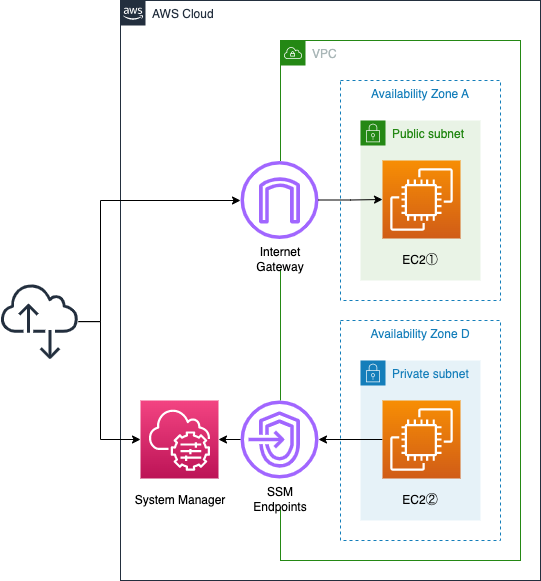
Important In order for the ssm-user account to be created, the instance profile attached to the instance must provide the necessary permissions. I can take a look at the NGINX configuration and find the HTML file that is being served by the. To use Session Manager on a Windows Server domain controller, create the ssm-user account manually if it isnt already present, and assign Domain Administrator permissions to the user. I can type ls to list the contents of the filesystem and start exploring. A couple seconds later I have shell inside the container running on AWS Fargate.
SSM SESSION MANAGER INSTALL
If you have any further questions, please mention them in the comments. If necessary AWS Copilot can automatically install the SSM session manager plugin for me. In this article, we've gone through establishing sessions with Amazon EC2 instances using the web browser and AWS CLI without having to open any ports or using any intermediate bastion hosts. To terminate the session, you can initially run exit within the session and then run the termination command. Note: Once you start the session, the session ID will be displayed in the shell. To terminate the session, run the following command: aws ssm terminate-session -session-id

SSM SESSION MANAGER HOW TO
For information about how to determine the version number running on an instance. To stream session data using Amazon CloudWatch Logs, SSM Agent version 3.0.284.0 or later must be installed on the managed node. Once the plugin is installed, run the following command to start a session with an EC2 instance: aws ssm start-session -target Enable session logging to CloudWatch log group /aws/ssm/session-logs with encryption enabled Save the changes. To start a Session Manager port forwarding or SSH session, SSM Agent version 3.0.222.0 or later must be installed on the managed node. For an Ubuntu Server, follow the steps covered here. To install it on Linux, follow the steps covered here. Session Manager is a fully managed AWS Systems Manager capability that lets you manage your Amazon EC2 instances through an interactive one-click browser-based shell or through the AWS CLI. sessionmanager-bundle/install -i /usr/local/sessionmanagerplugin -b /usr/local/bin/session-manager-plugin Session Manager is an AWS Systems Manager capability that lets you manage your Amazon Elastic Compute Cloud (Amazon EC2) instances, on-premises instances, and virtual machines (VMs) through an interactive one-click browser-based shell or through the AWS CLI.

To install the plugin on MacOS, download the bundled installer from here, unzip the package, and then install it by running the following command: sudo. To install the plugin on Windows, download the installer from here and follow the on-screen instructions. As a prerequisite, ensure you've installed the Session Manager plugin for AWS CLI.
You can use the AWS CLI to start and terminate sessions to EC2 instances. Select the instance to connect to in the Session Manager console Connect to Amazon EC2 using the Session Manager via CLI


 0 kommentar(er)
0 kommentar(er)
